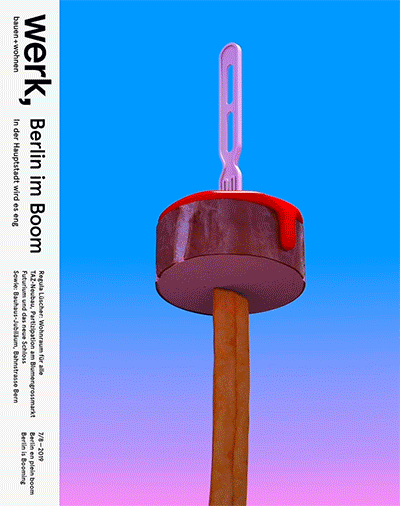werk, bauen + wohnen 7/8–2019

Keeping the Approaches Clear
At that time, it was, without question, truly delightful. Cycling your bike in the early morning through the colonnade of the Brandenburg Gate always promised to be a highpoint: the view of the magnificent three-kilometre-long axis in the direction of the university in the western part of the city was combined with a trip through German history – or, to put it more casually, through the background images to the German daily news. Today this is hardly conceivable. The city is full of tourists, the axis is a fan mile and Pariser Platz is Berlin’s “front parlour”. And, like every living room, it is free of traffic.
Nowhere in Berlin is the use of urban space for tourism revealed more directly than in the redesign of the city centre. With the football world championships giant posters began to be fixed to facade scaffolds, often not disguising a building site at all – in terms of building there was so little happening in 2006. Cheap air travel has driven low rents out of the once dreamy exclave Berlin. With the building boom the hot real estate market has boiled over completely. In short: Berlin is now suffering from the entirely normal problems of a trendy metropolis. Wringing their hands people look for affordable apartments, and there is even talk of compulsory purchase of privatised housing stock (see the interview with Senate Building Director Regula Lüscher on page 6).
Hand in hand with the boom there was a new symbolic occupation of the centre of the capital, for many also the centre of the Republic. On this account the reconstruction of the Berlin City Palace, which is to be used as the Humboldt Forum, is not just a normal building work. Without repeating the old debates, the building can now be perceived as construction, architecture, indeed as urban space. If you walk through the new narrow central courtyard invented by Franco Stella new views of urban space are opened up, for instance of Karl Friedrich Schinkel’s Altes Museum opposite or of David Chipperfield’s new building for the James Simon Gallery on the Museumsinsel. Interestingly, both buildings equip Berlin for the phenomena of the presentday big city: if in the Altes Museum it was the generously dimensioned central loggia that raised the citizens to eye level with the King, soon tourists will delight in “history” and the exhibitions in the Humboldt Forum. Berlin has definitively arrived at a globalised metropolitan normality. — Roland Züger